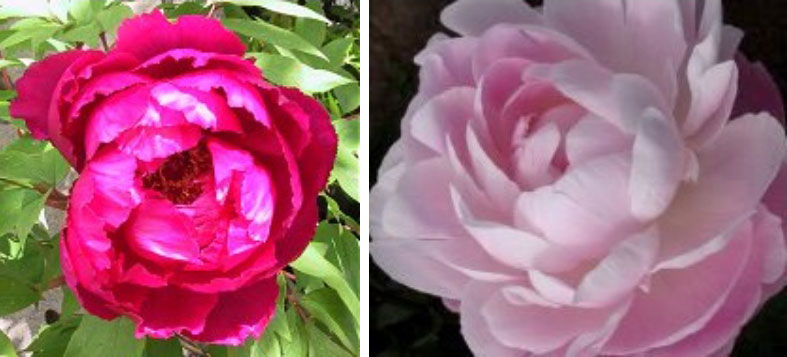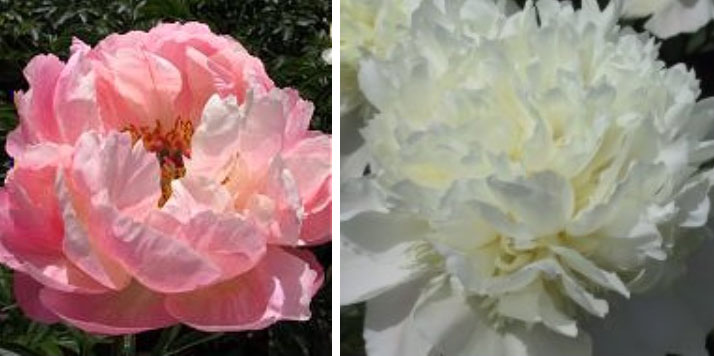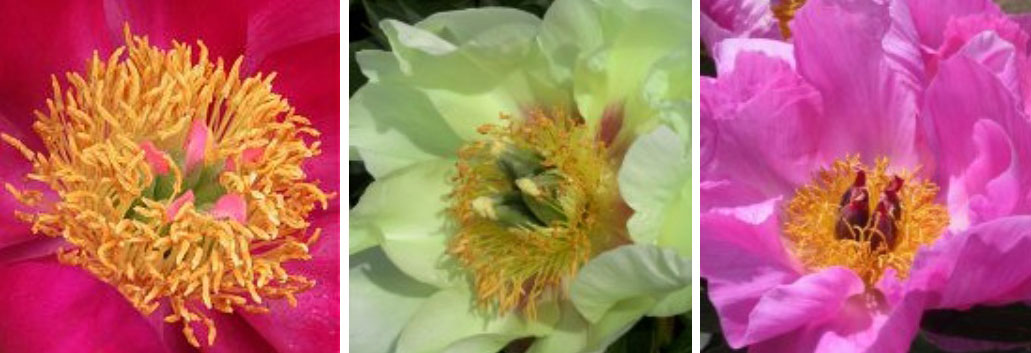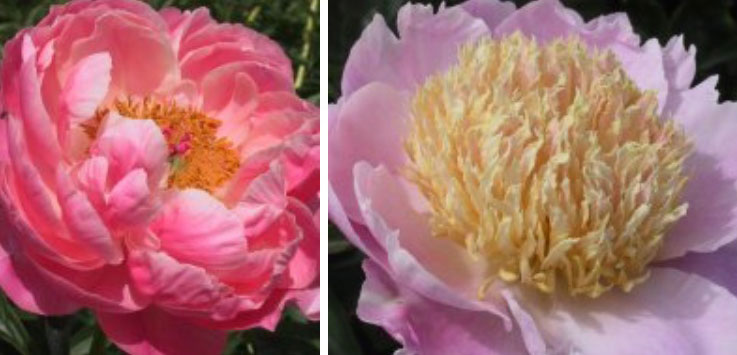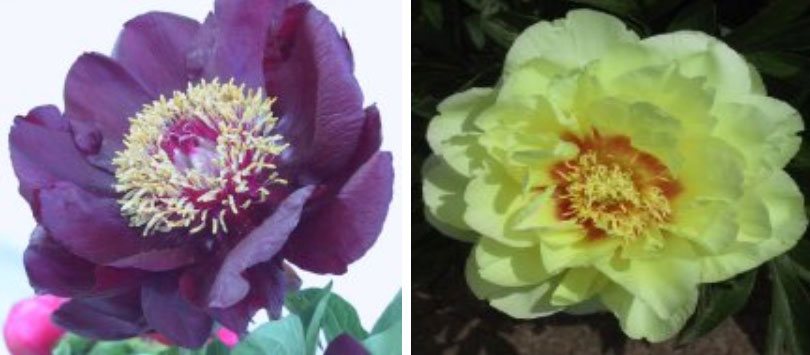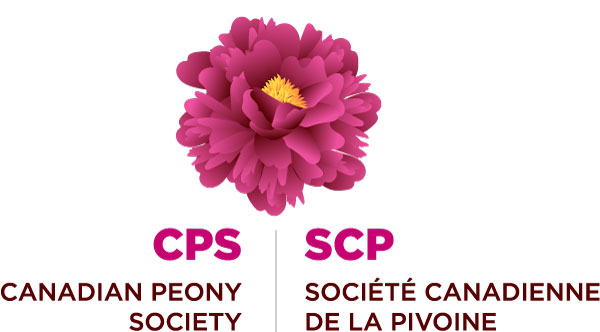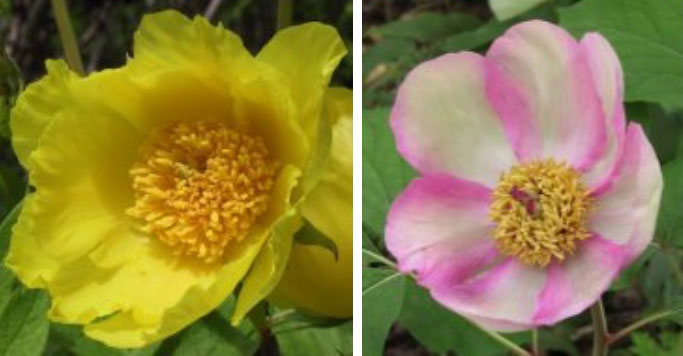
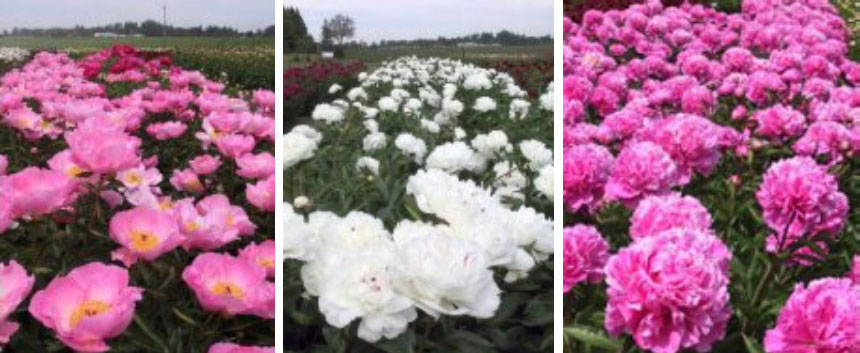
The cultivation of peonies for medicinal use can supposedly be traced back to the prehistoric Xia Dynasty (2000-1500 BC) in China, where herbaceous varieties are still called shaoyao, 'medicinal herb plant'; the tree peony, originally just 'tree shaoyao', was first described over a millenium later during the Qin Dynasty (221-206 BC), when a clear distinction between the two types first seems to have been made. Peonies as ornamentals were supposedly first grown at the end of the Sui dynasty during the reign of the Emperor Yang (605-617 AD), who apparently restricted cultivation to imperial use and allocated different flower colors to favored officials according to rank. Peonies spread throughout the country during the T'ang dynasty (618-906) that followed, and the tree peony (mudan, 'king of flowers') in particular - now China's official national flower - grew in popularity as Chinese breeders developed huge, double-flowered varieties, both tree (left) and herbaceous (right), in a wide range of colors.
